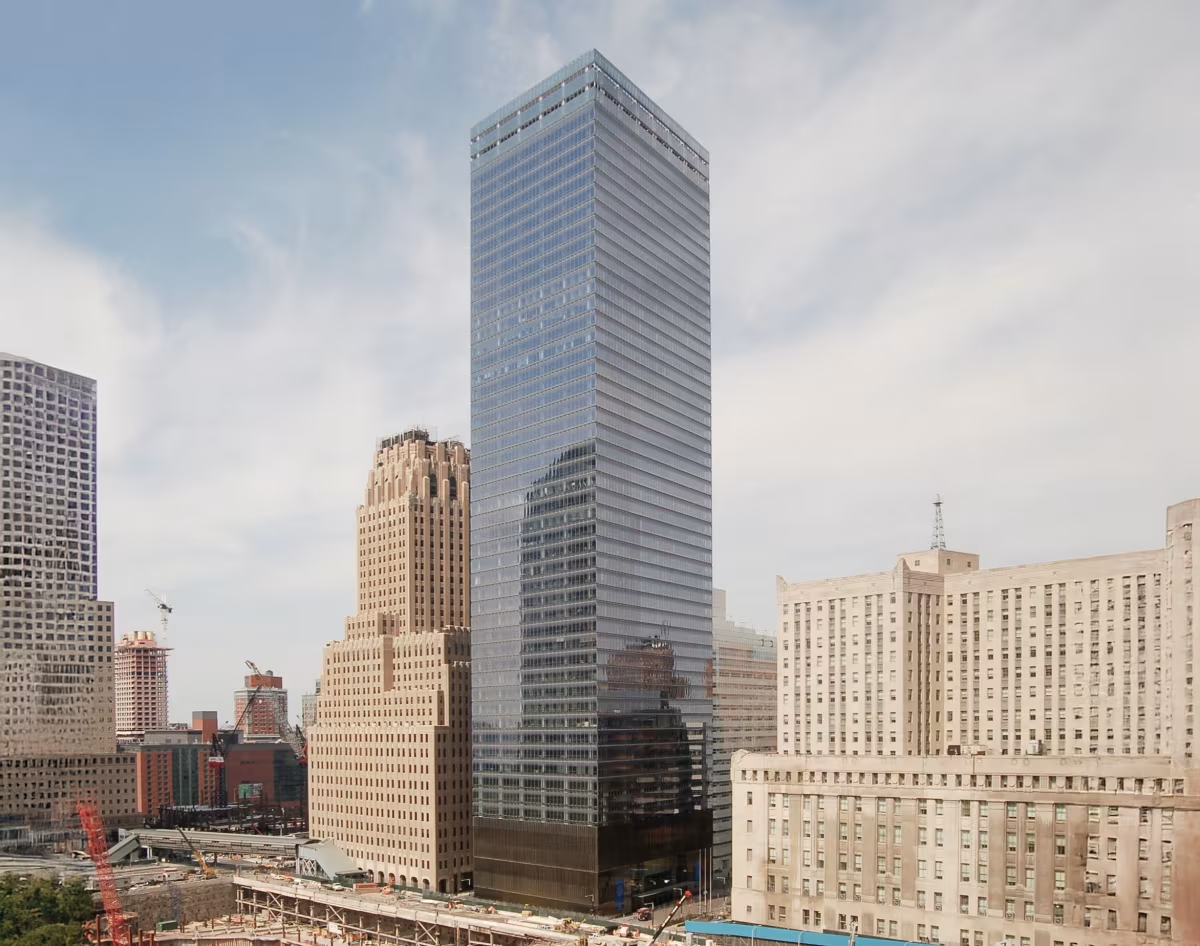Random House Tower vs 7 World Trade Center


Comparing the Random House Tower and the 7 World Trade Center is especially interesting because they share much in common. Both rise in New York, NY both were designed by Skidmore, Owings & Merrill, and they were completed within 3 years of each other.
This overlap gives us a unique opportunity to understand how Skidmore, Owings & Merrill approached different commissions in the same urban context and historical context during a short period.
Height & Size
These two towers present an interesting contrast in their proportions. The 7 World Trade Center rises higher at 741ft (226m), while the Random House Tower reaches 682ft (208m). However, the Random House Tower accommodates more floors with 52 levels above ground, compared to 51 floors in the 7 World Trade Center.
This suggests different approaches to interior space design. The 7 World Trade Center has an average floor-to-floor height of approximately 4.4m, while the Random House Tower has more compact floors averaging around 4m each.
These different proportions likely reflect the specific needs each building was designed to serve, whether driven by zoning regulations, client requirements, or the intended use of the spaces within. The contrast shows how architects can achieve different spatial experiences even when working with similar overall building scales.
Architectural Style
Both the Random House Tower and the 7 World Trade Center were designed in line with the aesthetic conventions of the Contemporary style.
At the time, this style was at the height of its popularity. So Skidmore, Owings & Merrill followed what was in many ways expected at the time, producing designs that fit comfortably within contemporary architectural norms rather, than breaking with convention.
Uses
The Random House Tower follows a mixed-use model, combining commercial and residential. In contrast, the 7 World Trade Center has remained primarily commercial.
The Random House Tower offers 101 residential units.
The Random House Tower also provides 150 parking spaces.
Structure & Facade
Both the Random House Tower and the 7 World Trade Center rely on a Frame structural system.
A frame structure uses a grid of columns and beams to carry the building's loads. This frees the walls from structural duties, allowing for flexible floor plans and larger windows.
They also employ the same type of facade, a Curtain Wall facade.
A curtain wall is a non-load-bearing facade hung from the structural frame. It is anchored to floor slabs and transfers only its own weight and wind loads, allowing for sleek, glassy exteriors.
| Random House Tower | 7 World Trade Center | |
|---|---|---|
| Skidmore, Owings & Merrill | Architect | Skidmore, Owings & Merrill |
| 2000 | Construction Started | 2002 |
| 2003 | Year Completed | 2006 |
| Contemporary | Architectural Style | Contemporary |
| Mixed | Current Use | Commercial |
| 52 | Floors Above Ground | 51 |
| 2 | Floors Below Ground | 1 |
| 193 | Last Floor Height | 207 |
| 208 m | Height (m) | 226 m |
| Frame | Structure Type | Frame |
| Steel And Reinforced Concrete | Vertical Structure Material | Steel |
| Reinforced Concrete | Horizontal Structure Material | Poured Concrete Over Metal Decking |
| No | Facade Structural? | No |
| Glass, Steel, Aluminum | Main Facade Material | Glass |
| Plaza Construction Corporation | Main Contractor | Tishman Construction |
| Steve Ross | Developer | Silverstein Properties |
| Thornton Tomasetti | Structural Engineer | WSP Cantor Seinuk |
| NY | State | NY |
| New York | City | New York |
| 1739 Broadway | Address | 250 Greenwich Street |